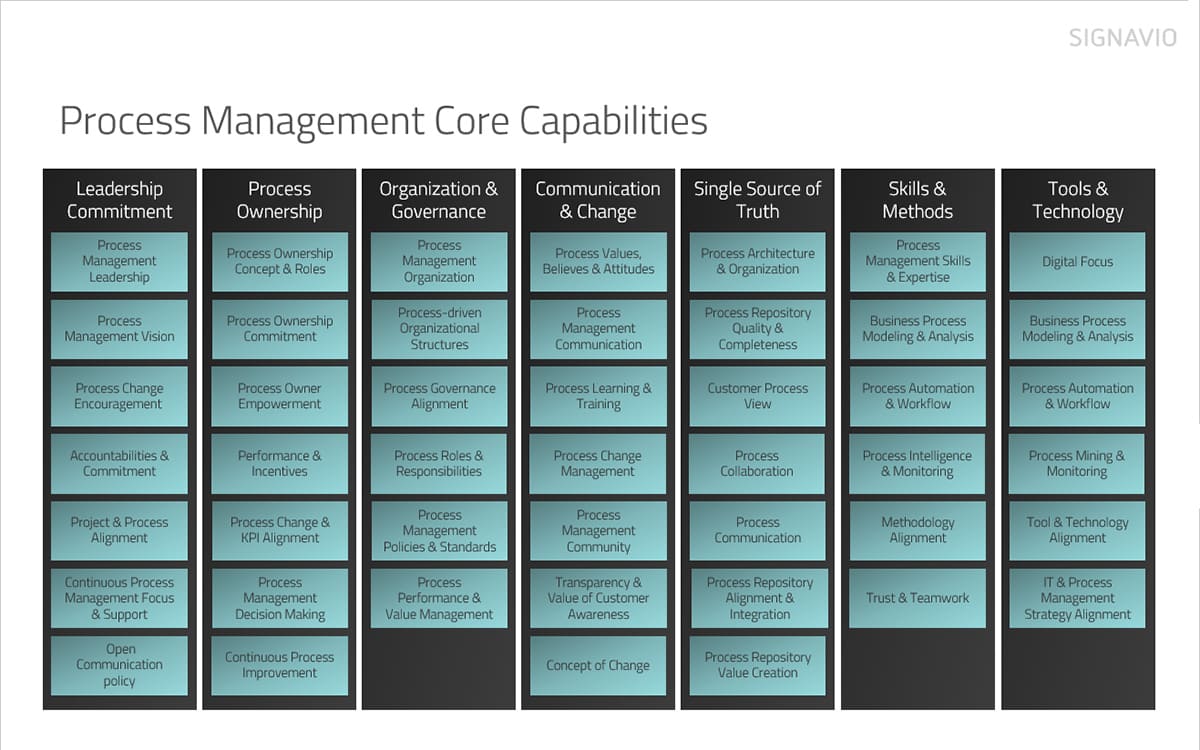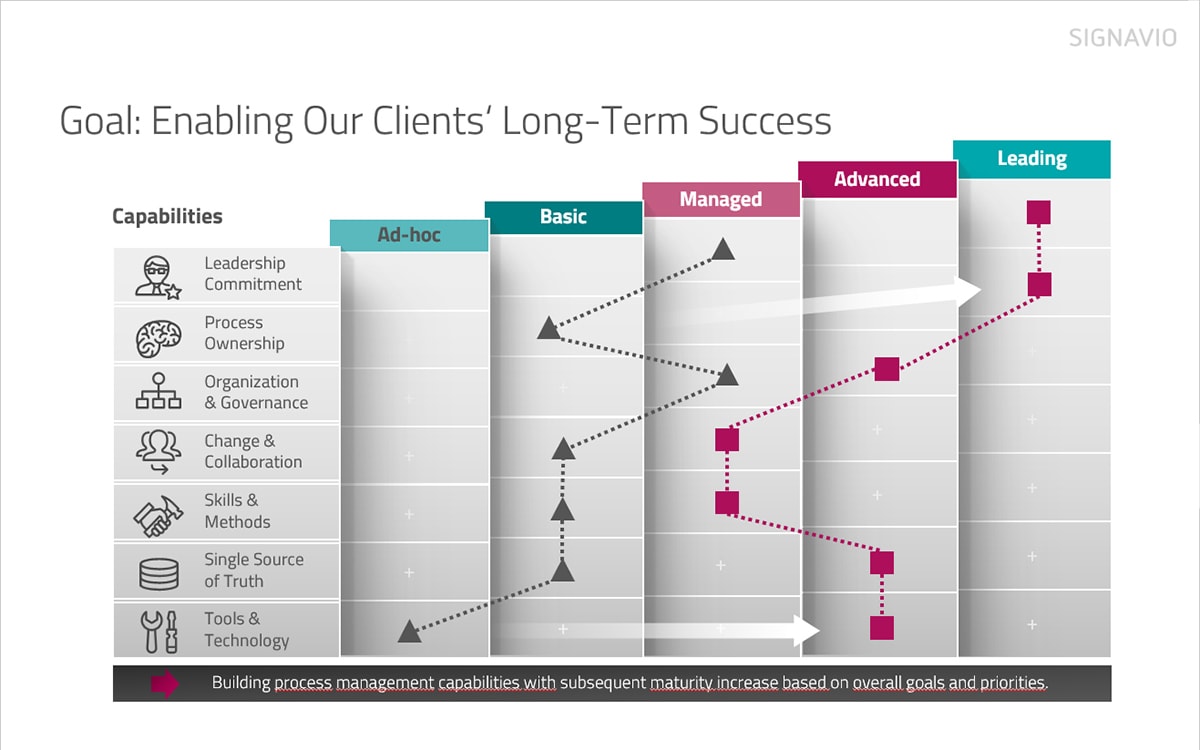What do we mean when we talk about ‘maturity’?
At the most basic level, maturity means something has reached a particular stage of growth or development. Generally, we would consider this stage to be an ‘optimal point’, beyond which you stop seeing improvement, and may even see some decline. Think of a fine wine getting even better with age, a banana slowly ripening, or a leather jacket getting softer and smoother as the years pass.
People also mature and develop automatically, though of course there are many facets to maturity. We can ask in what respect someone is mature; for some people maturity is totally unconnected from their age. Some will have reached great maturity through general life experience, while others are characterized by a greater tendency towards collaboration and cohesion with others.
In these examples, for both people and other things, the maturation is natural and automatic. With modern techniques, these changes can be controlled, guided, or slowed. For example, selective breeding means we can now make tastier bananas available for a longer period of time, ensuring a more enjoyable product is available to consumers for longer, while also increasing sales for the supplier. Personal growth and maturity can also be systematically improved, for example through the education system.
Organizational maturity
In a business context, people’s natural abilities and skills can be developed further via additional training or coaching. This ‘systemic maturation’ has a number of beneficial effects, including:
- Supporting people to learn according to their needs and the needs of their role
- Direct performance evaluation
- Knowledge and skill improvement
- Self-motivation, as well as collective motivation within the employee group
- A chance to share and enjoy success together
However, these natural abilities and skills require the right environment to be brought to the fore.
Effectively assessing BPM maturity
As we noted above, maturity can encompass many characteristics. When we look at business process management, a whole range of components must be working together within a business to ensure any process management initiative is effective. The table below summarizes the seven core capabilities that a business must demonstrate, in order to ensure they have the right environment for a successful process management framework:
An organization can assess their achievements for each of these seven capabilities, by asking:
- Is there clear leadership commitment for business process management within the organization?
- Are owners for all processes in place? Are they empowered through a clear mandate, and are they successfully filling that role?
- Do you have process management organization and governance structures established to lead, coordinate, and supports process efforts for the organization?
- Is process information communicated regularly, consumed easily throughout the organization, and offering a focal point for collaboration and change?
- How complete, integrated, and standardized is your process documentation?
- Do you have the necessary process management skills and resources available?
- Are you using the necessary business process management tools to drive consistent and positive business outcomes?
The spectrum of BPM maturity
The answers to these questions contribute towards building the core capabilities of BPM maturity, which can, in turn, be measured on a spectrum. The list below outlines the characteristics at each stage of this spectrum, beginning with the lowest level of BPM maturity, the ad hoc approach.
- Ad-hoc The business is beginning to organize its process management efforts. Processes, methods and tools are not formalized.
- Basic Process management efforts are partly organized. The business only uses process management tools are for specific projects, or in a few departments. Basic processes are documented.
- Managed The business has a process management strategy in place. Process management efforts are organized and aligned across several areas. Process management tools are more widely adopted, and every important process is documented.
- Advanced The business manages, organizes, and structures their BPM efforts consistently throughout the organization. Processes, methods, tools, and projects are well-defined and established in most parts of the organization. Process knowledge is high, and the organization realizes the benefits of standardization and ongoing process improvement.
- Leading Leading businesses also manage, organize, and structure their BPM efforts consistently throughout the organization, and these efforts are well-defined, aligned with each other and to broader strategy, and evaluated regularly. Process knowledge is very high and leads to competitive advantages, with processes, methods, tools, and projects rolled out business-wide. Finally, continuous process improvement is considered an established mindset throughout the whole organization.
A framework for assessing BPM maturity
It is useful for any organization to know where they stand on the BPM maturity spectrum, but it becomes crucial for organizations seeking to advance their maturity, and reach the ‘leading’ stage. Assessing BPM maturity in this way requires a framework that can:
- Evaluate and benchmark your organization based on practical experience from customer projects;
- Identify and articulate known and proven factors that have a significant impact on your BPM initiatives;
- Enable continuous evaluation through a solid and efficient assessment approach; and
- Supplement existing maturity assessment models (such as EDEN) without replacing them.
For businesses of all shapes and sizes, assessing BPM maturity is a way of thinking about the question, “Where am I, and where am I going next?”
Assessing BPM maturity with Signavio
The Signavio Consulting team brings decades of experience to bear on assessing BPM maturity within organizations, and recommending the best ways to get where you want to go. The diagram below shows a visual representation of the support Signavio offers to build up the seven process management core capabilities, and move an organization across to the higher end of the BPM maturity spectrum:
Assessing BPM maturity with Signavio takes no more than a single working day. Structured and guided interviews are conducted with stakeholders, for around 60-90 minutes each. Signavio then prepares a comprehensive summary, aggregation, and gap analysis of assessments, statements and conclusions from the interviews. We will then work directly with you to conduct a joint interpretation of the results, before supplying a series of recommendations for future action.
Assessing BPM maturity with Signavio is simple, fast, and effective, and can make a massive difference to your business. Stop wondering where you’re going, and get there—fast.
Next steps
If you’re ready for your very own BPM maturity assessment, contact Signavio Consulting today at consulting@signavio.com Or, if you’d prefer to see how the SAP Signavio Process Transformation Suite can help improve your business, sign up for a free 30-day trial today.



